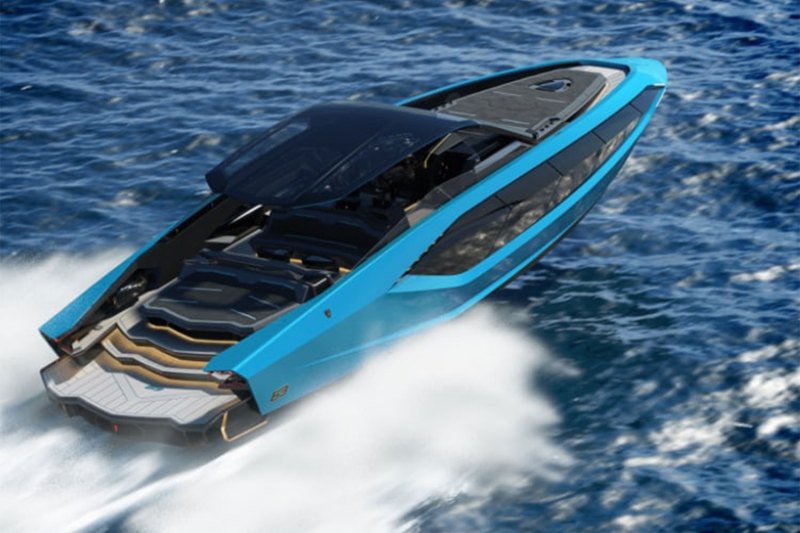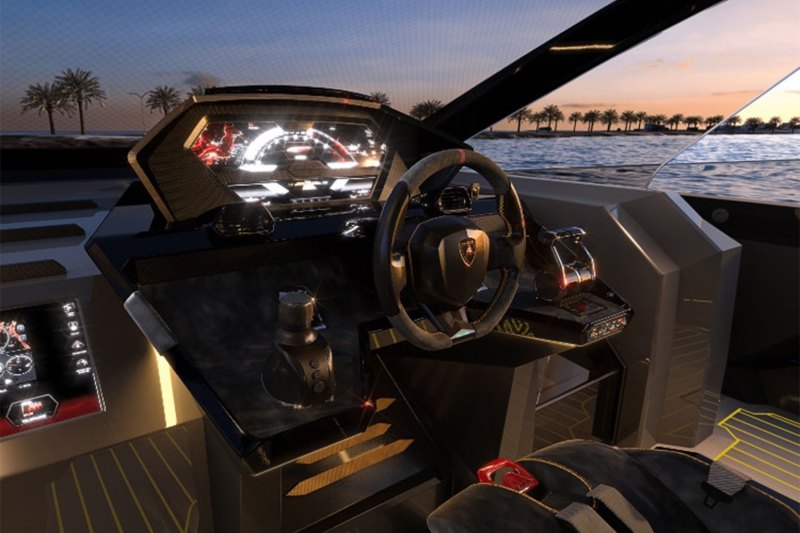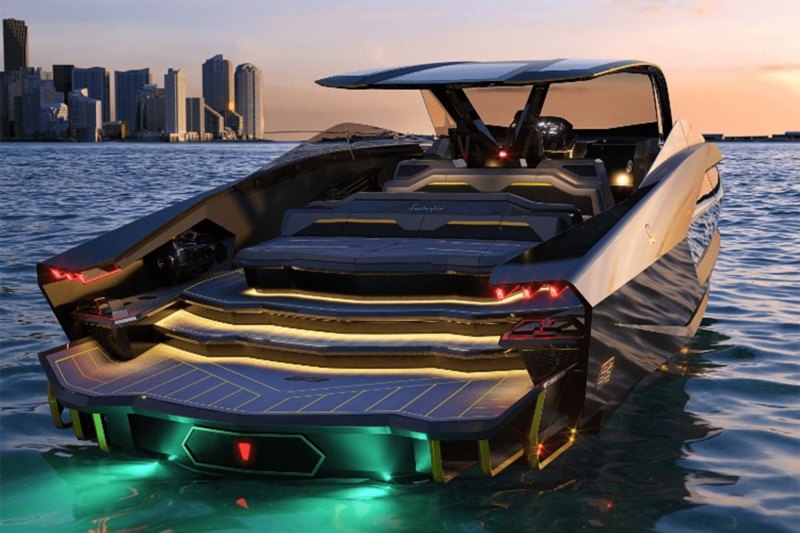For one-percenters and anyone who’s life has been thoroughly documented on American Greed, finding creative new ways to spend those millions can be challenging. Some of us can relate to having an extra three million dollars to burn, unable to decide between a new hypercar or a speedboat. Next year, Lamborghini wants to make the answer a little easier: Both.

By any measure, the limited-edition Tecnomar for Lamborghini 63 is an absurd, hypercar-inspired pleasurecraft. At its core are twin MAN V12 24.2-liter diesel engines weighing a total of five tons. At full throttle, the combined 4,000-horsepower is capable of pushing the 63-foot boat to an eye-popping 60 knots. That makes it the fastest vessel in Tecnomar’s very capable, very high-end catalog of luxury boats.

Automobili Lamborghini’s Chairman and CEO, Stefano Domenicali said of the design, “If I had to imagine a Lamborghini on water, this would be my vision.” With clear inspiration from the new Sián FKP 37 supercar, the aesthetic is unmistakably Lamborghini. The angular hull, liberal use of panoramic side windows, and steeply raked cockpit all give the illusion that the vessel is screaming across the water, even at a standstill. The aggressive bow lights are similar to the company’s radical Terzo Millennio electric concept car. At the rear, the sharp taillights recall those of recent Lamborghini models. Everything about the look is dramatic, extreme, and luxurious — all hallmarks of Lamborghini’s signature look for nearly 60 years.

That visual drama carries through to the cockpit as well. The design takes equal inspiration from the driver display clusters of modern hypercars and traditional nautical gauges. The race-inspired captain’s chair, bold red start/stop buttons (one for each engine), and touchscreen panels feel more reminiscent of a supersonic fighter jet than a traditional watercraft. Fit and finish are high-end throughout with heavy use of carbon-fiber and a boatload (pun intended) of available customization options for fabrics, trims, and decking materials.
Pricing for the Tecnomar for Lamborghini 63 is rumored to start around $3 million, although the expected options list would quickly push that price tag much higher. First deliveries are slated for early 2021, and production will be capped at just 63 units.
Well-heeled mariners who can’t bother to wait for their own over-the-top pleasurecraft can shop the similarly priced Hyper-Sub speedboat-submarine right now.


